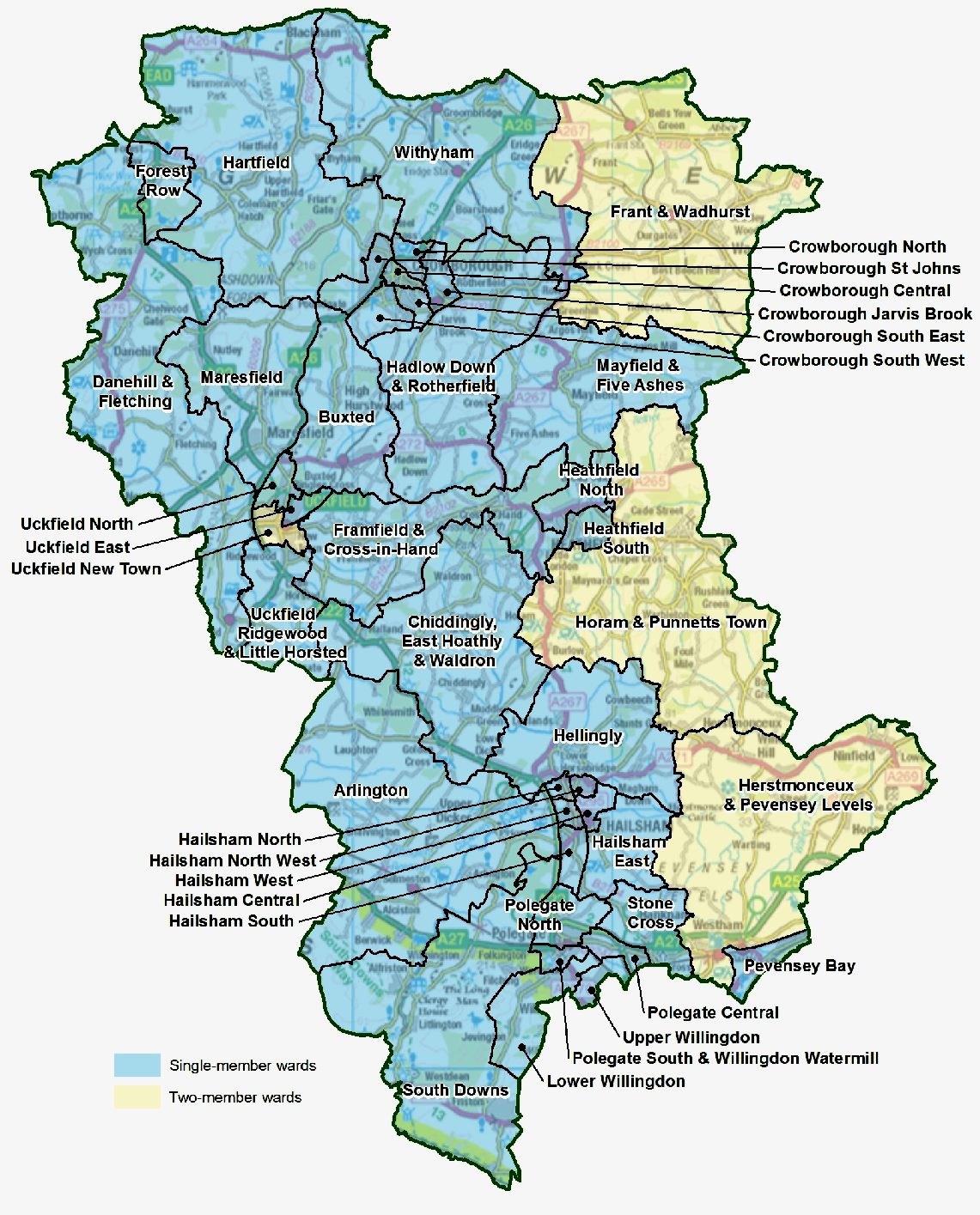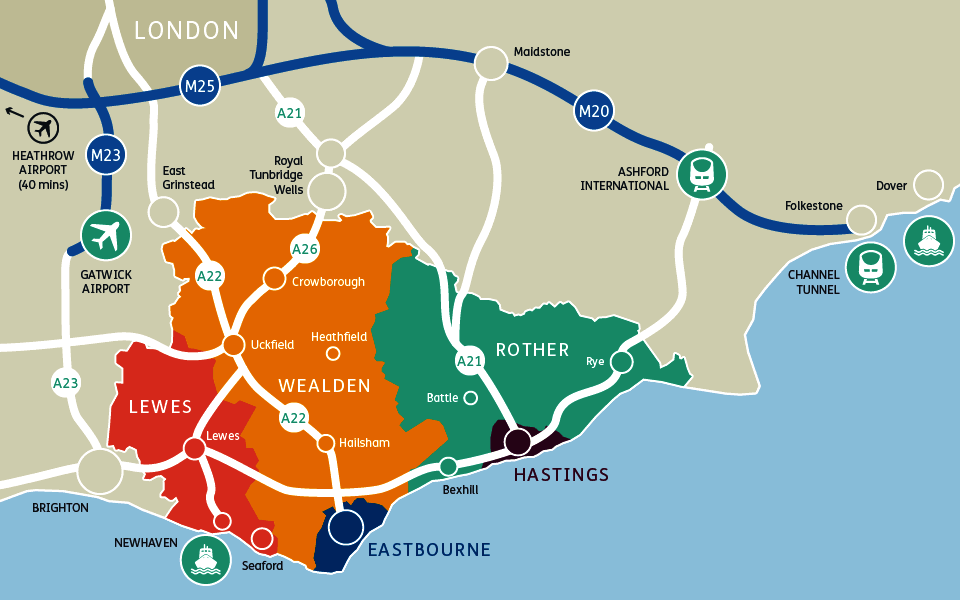|
POTHOLED SOCIETAL POLICIES
|
|
East Sussex faces a growing challenge: overloaded road networks due to a surge in traffic. Increased population from new executive housing strains the capacity of narrow A and B roads initially designed for smaller villages. This problem is exacerbated by climate change concerns, as these new houses often have larger carbon footprints than sustainable alternatives. Additionally, Community Infrastructure Levy (CIL) funds collected from new developments are not being used to adequately improve existing road infrastructure.
In the case of councils there is an almost complete lack of transparency and obfuscation, despite the Consumer Protection Act 2015, and Human Rights Act 1998. Why would any corporation stoop to such tactics, unless the explanations are incriminating. They are! The reason for disguising where the money is going to is to avoid the detection of crimes.
Whatever the reason, it is plain common sense that if you have narrow 'A' and 'B' roads designed to support villages, and then build small towns, or extra villages in between to obtain more taxes, those poor little tarmac highways are going to have to carry a lot more vehicles than before - be overloaded and the structure disintegrate a lot faster than the money coming into the system can cope with repairs. This is called an "unsustainable" practice, the same as not building low cost housing. It leads to more costs in the long run, without any more taxes coming in to fill that gap.
One way of reducing expenditure is to sack negligent council officers, and reduce staff to a more efficient number. Perhaps by introducing time-and-motion studies as in factories. Another way is to reduce the number of councillors and MPs, who do very little when decisions are all delegated to officers. In our experience, councillors are advised by officers not to respond to correspondence by their officers. So what purpose do they serve? They just cost the taxpayer more. We might also consider Artificial Intelligence (AI) when it comes to planning applications, with Central Government taking over from under performing local authorities.
The Community Infrastructure Levy (CIL) taxes are supposed to be spent improving the highways that link up the new builds, put in lighting, etc. But as you can see for yourselves there has been no such improvement in the link roads. To the contrary, the roads continue to suffer deterioration, with more potholes.
A pothole in Church Road, Herstmonceux, in a very dangerous location, when turning left onto the A271, heading towards the village.
STOPPING ROAD OVERLOAD IN EAST SUSSEX: THE SOUTH OF ENGLAND & OTHER REGIONS
THE
PROBLEM:
Misdirected Community Infrastructure Levy (CIL): Funds collected from developers aren't being used to improve the road network, leaving existing infrastructure to bear the brunt of increased traffic.
SOLUTIONS
- TRAFFIC NEUTRALITY:
Only
allow new development where those housing estates might tie into major
roads that are capable of carrying an increase of traffic. Or only allow
new development that is sited such as to be able to tie into existing
major highways, or planned new highways, dual carriageways and
motorways, that tie into major roads with extra capacity. Meaning that
all new development is traffic neutral.
Strategic Road Planning should include conducting thorough traffic flow studies before approving new developments, to ensure traffic neutrality. The implementation of new roads would only be if absolutely necessary and designed with sustainability in mind (e.g., dedicated bus lanes, bike paths). After all other avenues had been explored, with a view to protecting existing roads that cannot be widened or bypassed to avoid accelerated degradation.
INCREASED BUS TRAFFIC AS PUBLIC TRANSPORT IMPROVEMENT
Increased bus traffic, even if it alleviates car congestion, can contribute to road wear and tear. More
conventional buses will inevitably lead to more wear and tear on roads
as higher tyre loads. Replacing HGV (based) buses with smaller community buses with lower axle weight can reduce the impact compared to
the increased number of cars for the same passenger load. Provided that drivers can be persuaded that buses are a viable alternative to the convenience of personal cars.
Which, is a doubtful, or even a fanciful proposition at best! Because
people like their independence. And of course, there are many smaller
cars that are lighter. Hence, gas/diesel guzzling 4x4 SUVs should be
road taxed off the highways.
Even if all CIL funds go towards road repairs this year, increased traffic next year might necessitate further repairs, creating a cycle of constant maintenance using limited funds - in any circular economy. I.e. one that is balanced and sustainable. Simply because we cannot go on building more and more houses, on a diminishing supply of land.
Concerns about councils prioritizing pension investments over infrastructure improvements is
extremely pertinent. Transparency and accountability are crucial to ensure CIL funds are used effectively for long-term infrastructure
needs, rather than pursuing council priorities that are not focused on
providing an effective remedy.
- Public-Private Partnerships: Explore public-private partnerships where private companies invest in road infrastructure in exchange for future revenue streams (e.g., tolls on specific routes).
- Congestion Pricing: It has been muted to consider implementing congestion pricing schemes where truck drivers pay a fee to enter congested village areas, except where delivering locally. Though, building bypasses as alternative routes is a better means to relieve traffic blockages in village high streets. Additional taxes in an already overtaxed and inefficient economy being seen as counter productive.
- Expanding bus routes: Increase frequency and accessibility of bus services, especially connecting newly developed areas to existing infrastructure.
- Autonomous zero emission mini-buses and taxis is another way of improving transport, provided that the roads are properly maintained, without potholes that driverless vehicles may not see as well as human drivers, unless, specifically equipped with sensors to detect below ground hollows.
Bus Improvements Explore Options Like:
Electric Buses: Transition to electric buses to reduce noise pollution and environmental impact.
Dedicated Bus Lanes: Create dedicated bus lanes to improve bus travel times and reduce wear and tear caused by stop-and-go traffic. Only practical in towns and cities. In villages, there is no room for additional lanes.
Park & Ride Systems: Develop Park & Ride systems where people can park their cars outside city centers and take buses for the final leg of their journey.
Once again, useless for villages being engulfed in traffic from new
housing developments that should never have been approved in the first
place.
Where transparency is an issue, it should be the right of any citizen to report suspected fraud to an outside police force. For example, in Sussex, Sussex police should be prohibited from having any part of an independent investigation by an outside force. The last time serious planning crimes were reported to Sussex police, they failed to mount any kind of investigation. Going so far as to give Wealden's officers a blank sheet of police headed paper, for Wealden's officers to write their own letter of exoneration. This included the officers who were accused of crimes, including the illegal demolition of the Bushy Wood animal sanctuary in 1997. Against which the criminal complaints were buried, no investigation taking place, even though Sussex police (or the author of the letter of exoneration) suggested it had. It was a fix to protect the officers acting illegally from being prosecuted. Commonly called a conspiracy to pervert the course of justice. Outright fraud, and massive misconduct in public office worse that R v Dytham 1979 QB 722.
One can imagine from this document example of corruption, just how much more public money is being used for nefarious purposes.
The national government
should play a role by setting stricter guidelines on how CIL funds are used, ensuring they are directed towards infrastructure improvements.
These interventions, preferably via dedicated "Anti Pothole"
statute, such as a proposed: "Pothole and Road Maintenance Act
2025." Should direct what proportion of CIL and Road Fund
Licences, go to the build of new roads, and improvements to existing
roads where housing development is causing strain to an overburdened
infrastructure. All such funds going to highways and infrastructure. Not
to investments, pension plans, and the like.
2. Sustainable Bus Procurement: When purchasing new buses, prioritize energy-efficient models, where possible made with recycled materials. Giving priority to electric and fuel cell, or green methanol powered vehicles that are tailored in passenger capacity to the route being operated.
3.
Life Cycle Cost Analysis: Conduct life cycle cost analyses for infrastructure projects to ensure long-term sustainability and cost-effectiveness.
THE TELEGRAPH 29 JUNE 2024 - BRITAIN'S POTHOLE PROBLEM 'FIVE TIMES WORSE THAN ESTIMATED'
CEBR, the economics consultancy, said in April that potholes are costing the economy £14.4
billion a year in lost productivity.
RAC 19 MARCH 2024 - ROADS IN THE UK ARE AT BREAKING POINT AT REPAIR BILLS HIT RECORD HIGH
To help highways authorities understand where the problems on their networks are, the RAC has partnered with technology company Metricell which has developed a
free mobile app that uses AI to automatically identify road defects via smartphone
cameras.
BREACH OF CONTRACT
Transport is the life blood of any nation. According to our Government website, a modern road network helps traffic move around the country more easily and is essential for economic growth. The present Conservative Government claim to have set out a long-term funding programme to create smooth, smart and sustainable roads. They say that their aim is to ensure that highways work is properly managed.
The Conservatives are saying one thing and doing another. The proof is in the pudding. Take a drive around your area and count the potholes. Note where they are and watch motorists dance around trying to miss the really bad holes in our roads.
Why are we still being charged Road Tax, when it is clear that the Tory Government under Theresa May, Boris Johnson and now Rishi Sunack are not conducting themselves in a manner fit to continue running the country. We'd be better off with Laurel and Hardy.
Take a look at these pictures, and maybe take a few of your own - being careful not to stand in any roads or cause inconvenience to other road users. Why not write to your MP, or the shadow government. Ask for some explanation as to where all of our money is going. Do we really need more nuclear submarines and aircraft carriers? Or, do we need decent roads for our everyday journeys to work and for all of those delivery drivers trying to get goods moving around the country.
POLITICS - If the state of an economy can be measured by the condition of the country's roads, we and neck high in a slurry pit of cow pats. Of course that is true, as anyone looking at our National Debt can see. But how did it get so bad? Where has all our income tax gone? Where has our Road Fund License money gone? Who is taking our money and spending it on other things we do not need. Is our Government corrupt or simply inept?
FAST FORWARD TO 2023 - Hailsham is now much worse, with the bridge from the high street an absolute disgrace, and the roads leading to and from the roundabout below, literally, death (serious accident) traps waiting to happen. Why Sussex police are not prosecuting East Sussex County and Wealden District Councils, would be something of a mystery, except - and as you probably know, they are paid by Wealden - hence are not impartial. More the opposite, down right indebted to the corrupt civil servants that hide behind closed doors, and rape you financially for rates far in excess of what any honest council would charge. This is a picture taken in March 2023 on the A271 as you exit Herstmonceux village, down Death Hill, heading toward Suicide Junction on the right (Silver car).
THE
OTHER SIDE -
In
case you did not know it, a rat-run is only popular because the road
planners have got their sums wrong and not made the main roads well
enough, or well planned enough to service local traffic. In this picture
we see the other side of the give-way sign - and yes, sure enough there
are potholes on the other side of the road. How come? Surely, East
Sussex County Council have a schedule of works to repair holes like this
as soon as they appear. You'd think so, but that would involve being
efficient and spending money where it is supposed to be spent. Wealden
are out borrowing money to buy land in Hailsham town centre - in the
process asking the rate payer to fund the interest payments. What then
of ESCC. Are they just as irresponsible? no wonder our Council Tax is
one of the highest in the country.
ROADS - Potholes in roads are not only dangerous, but also soak up energy with every bump that hinders progress. Pothole Politics is the name for policies that fail to address climate change (sustainable society) issues, but may apply to our pathetic record on adapting to meet the challenges ahead. How can we aim to better ourselves if we cannot even maintain the roads we have.
REPAIRED ONCE ALREADY - Not a bad blend in that one, pity it didn't last. This wear and tear may do better with a stronger repair compound. Who monitors the quality of the tarmac we use on our roads. Should not high traffic areas have a different mix to cope without constant repair after repair. Is there not a high speed repair machine? We certainly need one.
Map of the Wealden District showing the A21 and A22 as the main arteries for traffic. All roads in this district are is dire need of a re-vamp if we are to achieve a sustainable economy.
ROAD LINKS
https://www.rac.co.uk/drive/news/state-of-the-roads/potholes-in-the-uk-at-a-breaking-point/ https://www.msn.com/en-gb/cars/news/britain-s-pothole-problem-five-times-worse-than-estimated/ar-BB1p7Drm https://www.rac.co.uk/drive/news/state-of-the-roads/potholes-in-the-uk-at-a-breaking-point/ https://www.gov.uk/government/policies/road-network-and-traffic
FOUNDATION -
Thomas Jefferson often referred to the term
'good government.' In his opinion,
a Government ought to be judged by how well it meets its legitimate objectives.
"Legitimate," being the operative word.
|
|
|
|








